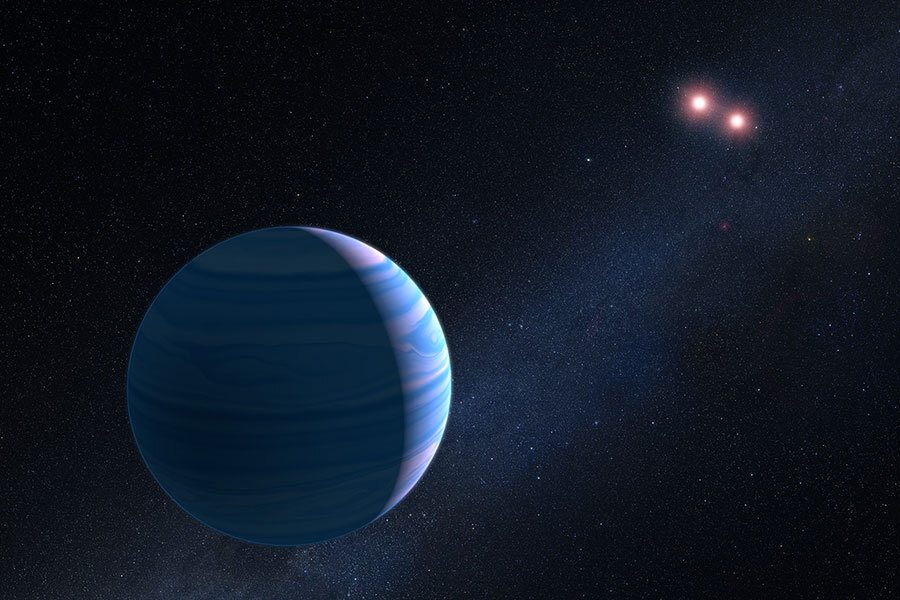Light-bending technique helps scientists find planets orbiting two suns
Loading...
A technique that allows astronomers to pinpoint planets that are too far away from their suns for Earth- or space-based telescopes to identify, has confirmed a new planet that orbits two suns, or stars, in a system scientists call OGLE-2007-BLG-349.
This circumbinary planet, which means it orbits two stars, is located about 8,000 light years away, near the center of our Milky Way galaxy. It’s about 300 million miles away from its suns, which is roughly the distance from the ribbon of asteroids located between Mars and Jupiter to our sun. The two stars in this system, which are red dwarfs, or small and low energy stars, are 7 million miles apart from each other. This distance is 14 times the diameter of the moon's orbit around Earth, according to NASA.
Though the trio was first spotted in 2007 by Earth-based telescopes, astronomers could not discern the third object. "The ground-based observations suggested two possible scenarios for the three-body system: a Saturn-mass planet orbiting a close binary star pair, or a Saturn-mass and an Earth-mass planet orbiting a single star," David Bennett, a scientist at the NASA Goddard Space Flight Center in Greenbelt, Md., said in an online announcement.
Using NASA’s Hubble Space Telescope observations and a promising technique that spots gravitational microlensing, or bending of light that passes between celestial objects, astronomers finally were able to determine that the third object they had identified was indeed a star. When light from one star is bent and amplified as it aligns with its partner star while the second one momentarily passes in front of it during its orbit, like a magnifying glass passing in front of an object, this is called microlensing. By looking at how the light bends and thus distorts the image of the objects around it during microlensing events, astronomers can glean information about those objects.
Hubble observations revealed that the light coming from this newly discovered system was too faint to be coming from a single star. The level of brightness Hubble recorded is associated most closely with two red dwarf stars orbiting close to each other.
“So the model with two stars and one planet is the only one consistent with the Hubble data,” Dr. Bennett said in the NASA announcement.
These types of star pairs, or binary stars, are common throughout the galaxy, as Universe Today points out. Scientists estimate that half the stars are actually duos, which could mean that about half of exoplanets, or planets that orbit stars other than our sun, could be circumbinary. According to Universe Today, only about 10 circumbinary planets have been discovered so far out of the more than 3,000 exoplanets that have been confirmed.
These have been discovered by NASA's planet-hunting telescope Kepler and are all much closer to their stars than the one spotted by Hubble.
But microlensing could open the door to many more discoveries, scientists hope. “Now that the team has shown that microlensing can successfully detect planets orbiting double-star systems, Hubble could provide an essential role in this new realm in the continued search for exoplanets,” the NASA statement says.








